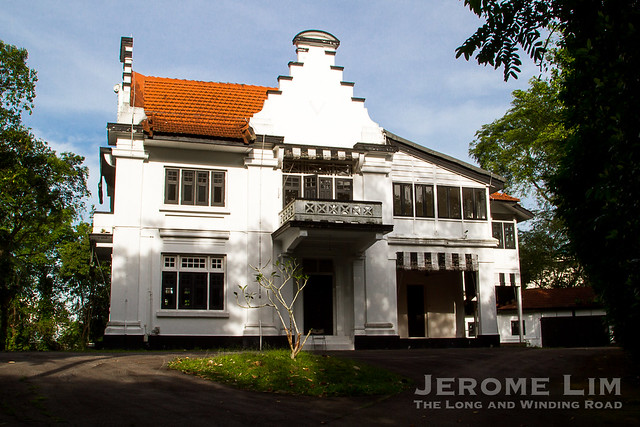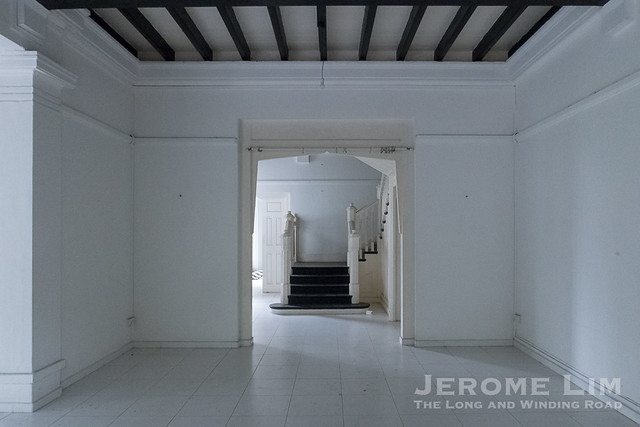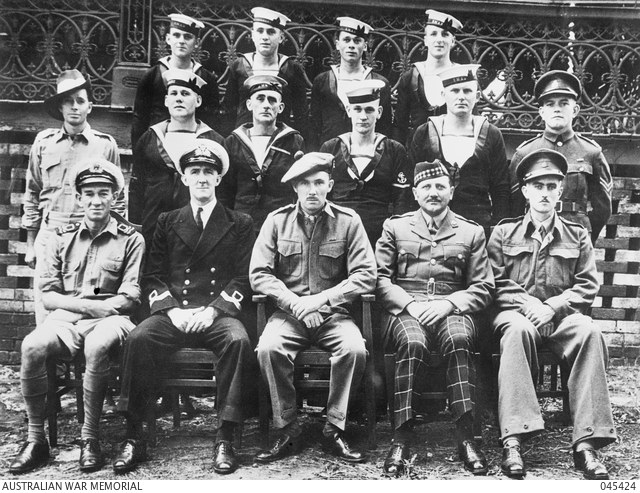A guest post by Edmund Arozoo, once of Jalan Hock Chye, Singapore and now of Adelaide.
WISH ME LUCK!
Would a non-Chinese Mandarin illiterate person in Singapore buy a Chinese Newspaper?
Well during the weekends in the 1960s a few would have but not to try and learn how to read Chinese but only to peruse a single column in the either the front or back page. Like them I have occasionally bought the “Mah piu poh” to look up the 4 D result of that evening. We were impatient to wait for tomorrow’s English paper. The late limited edition of the Chinese paper would be set to roll off the print and once the 4D results were known this was typeset and included in and the print run would commence.

A Mah piu poh vendor at a road junction.
Distribution was pretty fast and copies would hit the streets with young kids vending the newspaper at road junctions, bus stops or walking along the various streets in estates or kampongs calling out “Ma piu poh!”. If your home had a Rediffusion set you did not have to buy the newspaper to be informed of the results because the English channel would broadcast the winning numbers in the evening. If you were too slow or had been occupied and missed this, it was no problem because the Chinese channel would be broadcasting the results a bit later. Whether it was deliberate or not, I am not too sure. It could just be due to program timings. Besides “nǐ hǎo ma” knowing how to count from zero to nine in Mandarin was therefore essential if we wanted to transcribe the results for the other family members.
Recently I had a nostalgic recollection of the 4D scene in Singapore during those days. More so after the Trump/Kim summit where certain numbers were reported as quickly becoming “red” numbers and no further bets could be lodged. Nothing seems to change through the years in respect to the rush on “predicted” lucky numbers.
Well each time I visit Singapore I still have a flutter with the placing “Small” and “Big” wagers on numbers that I I hope would bring me luck and enhance my holiday budget. I still have to realise this dream.
Looking back and recollecting how different the 4D scene was in the 60s I had this urge to put down my thoughts and memories and hopefully be able to share with the older generation who may read and relate to my experiences. I also hope that if I am wrong with some of my perceptions or recollections someone could correct me and put things right.
Before I started to type out my thoughts I did a mini research by asking friends and asking the help of “Mister Goggle”, to ensure that certain “grey” areas of my recollections were not really illusions in the mind’s eye of a 70 year old brain.
It was fascinating to read how 4D gambling evolved with its roots from the brainwave of a schoolboy In Kedah, Malaya . He wanted to raffle off his bicycle for $100 and used the last 2 digits of the lottery draw held at the local horse race meeting.
Through the years gambling syndicates In Malaya and Singapore expanded this method to encompass the last 4 digits of the Turf Club sweepstake (six digits) lottery draws held for the last race during the Saturday and Sunday race days held at the Turf Clubs of Singapore or Malaya. This was all conducted illegally with a pretty well-structured network of runners to facilitate collection of wagers and winning payments. These runners collected a minimal sum (20c per bet) off the wages and a percentage of the winnings. However if they were caught they could face the strong arm of the law.
We had a certain salesman in a provision shop who was a runner and once he knew we had become regular clients and trust was cemented between both parties it was easy to place a bet. All one had to do was to have your numbers written on a piece of paper with the amount of the wager and pass it on to him indicating if it was for a single day or for the two days. The Chinese customers could do it verbally but not us. The man behind the counter would then glance around the shop to ensure that there were no plain clothed law enforcers in the vicinity before he would reach the drawer under the display counter and pull out his small notepad with different interleaved coloured pages (yellow and white if I remember correctly). With the use of a small slip of carbon paper he would write on the white sheet the numbers and the amount wagered and the date of the draw. On completion he would tear off the top sheet and give it back to the customer and money would change hands. Then if there was a win all one had to do was to present your slip of paper and money would once again change hands. If it was a big win one was always cautious that there were no bad hats around when receiving the money for fear of being mugged.
The Turf Club sweepstake lottery tickets could only be bought at the race meets but the 4D numbers could be bought at the various “illegal” outlets or some runners would go from house to house and collect the various bets from the individual households.
Well the numbers for the Turf Club lottery were drawn before the last race of the day and each horse was allocated one of these numbers. Thus the term “starters” was used then and is still used till today. So even if your lottery ticket number was drawn you had to pray that the horse allocated to the number would be in at least the first three to cross the finish line to score a big win. The consolation prize category was just that – just a consolation as you will not have a chance to secure a Big prize.
How things have changed. The Turf Clubs having realised that these illegal gaming syndicates were diverting potential revenues from their profits started their own “4D” sweepstakes. In response the illegal bookmakers offered discounted prices for each dollar bet being placed and higher prize wins to retain punters.
In years to come Singapore Pools took over the running of the 4D draws and also included an additional draw on Wednesday. Computerisation also allowed the introduction of a random generated system as an option to select 4-D numbers -the Quick Pick.
The method of personal selection of numbers for 4D draws was wide ranging. Auspicious dates like New Year day would see a run of the four numbers of the New Year or a combination of the last two digits of the old year with the last two digits of the new year. This combination was also used to select the 4 digits on someone’s birthday with the old and new age being used. Almost every household had a set of rolled up slips of paper with handwritten numbers from zero to nine. The set was usually kept in empty matchstick boxes or other containers and always handy when the occasions arose to ask someone to “pick” winning numbers.
On one’s birthday it was pretty common to be asked to perform the ritual early in the morning before you could wash away sleep from your eyes. Car registration plate numbers was also another source of forecasting. This could be when someone buys a new car or when one spots a vehicle involved in an accident. Photographs in the local newspapers showing vehicle accidents often used to show the registration plates and this often led to a run on the numbers. I think these days the numbers are blotted out. Then there were persons who could translate (“chye”) incidents or situations or dreams into numbers.
The fortune tellers also were another source of number generation with some relying on birds to pick fortune cards as well as 4D numbers. Places of worship were and still are where hopefuls pray for “lucky” numbers, be it temple or church etc. And for those successful in hitting it BIG there is always the token of an appreciation in the form of thanksgivings offered in return. In 1997 I recall a Catholic priest in Singapore, during his homily mentioning that he was shock to see 4D numbers written on one of his parishioners’ palms as the priest was about to place the communion host on it. The extremes that gamblers go through in their quests for winning in 4D, knows no limits.
Then with every approaching New Year there will be a number of Astrology books with a list of predicted numbers for the various Zodiac signs or Lunar Animal signs for the year ahead. Then during Chinese New Year there are the public fortune forecasting posters predicating the future and lucky numbers as well.
It has been a while since any of my numbers won me any prizes – well I am sure like the many other thousands of Singaporeans it will be soon. As it is often repeatedly stated – “You have to be in it to Win it”.
– Edmund Arozoo






















































































































































































































